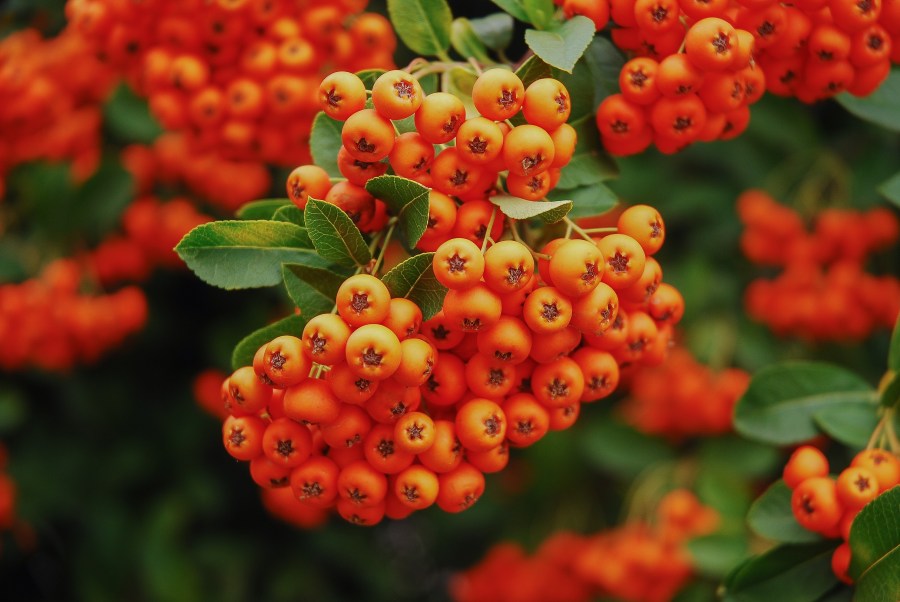SWD is by no means a problem in every vineyard every year, but 2023 saw some significant issues in several vineyards, and not just those in the traditional hotspot areas of south east England.
As we discussed in last October’s issue (http://tinyurl.com/Vineyard-Lessons-learned), warm, humid conditions in early September prompted an explosion in numbers, just at the time many grapes were ripening.
While late summer into early autumn is the main period for SWD damage in grapes, with much depending on the conditions at this time, there are some things growers can do now to help manage the risks.
Deploy winter monitoring
First and foremost is precision monitoring. Winter may not seem like the obvious time to be looking for SWD, but strategically placed traps are relatively more attractive at this time of year because they are not competing with other food sources, such as cherries, raspberries or blackberries.
Precision monitoring using multiple traps should be placed close to overwintering sites, such as dense hedges and woodland. Optimum layout is the subject of ongoing research, but red traps appear to be visually attractive to SWD over a distance of 4m, which may provide a clue as to what spacing will be optimum.
Adults do not lay eggs between November and April, but they will fly and feed during mild periods in the winter and spring, with winter survival rates depending on the duration and extent of any cold spells. Various precision monitoring traps are available, from small yoghurt pot size traps that are filled with a lure liquid, to larger reusable units. The choice of trap often comes down to a trade-off between the labour required for maintaining and checking traps, versus the initial cost.
In the summer, monitoring ‘wet’ traps can be tricky though, as you essentially have to sort through a vinegary soup looking for drowned fruit flies with spots on their wings. One alternative is Landseer’s automated SWD monitoring system, called ‘Trapview’. This uses pheromone traps that are equipped with cameras capable of distinguishing drosophila species and are connected to the internet to allow remote monitoring and catch reports.
The system costs around £370 per year but could provide more reliable data and mean less time spent forensically examining trap contents.
Virtual risk forecasts, such as the Omnia pest modelling service, may also be of use for assessing the overall risk level on individual sites.
Establish ‘dead-end hosts’
Another measure that could have a role in the overall SWD management strategy is to establish plants that are know to be attractive to SWD as egg laying sites, yet do not offer suitable conditions for the development of those eggs, either due to natural toxicity or lack of suitability.
Such plants are known as ‘dead-end hosts’, and their potential use in UK soft fruit and cherries has been studied in some detail by Sam Ardin, who worked with the AHDB as an intern in 2017. After assessing 127 potential plant species, she shortlisted eight plants that offer the most suitability as dead-end hosts in UK conditions. These include:
- Pyracantha coccinea (Scarlet firethorn)
- Prunus padus (Bird cherry)
- Rubia tinctorum (Dyer’s madder)
- Symphoricarpos x chenaultii (Chenault coralberry)
- Cotoneaster salicifolius (Willowleaf cotoneaster)
- Arum maculatum (Lords and ladies)
- Prunus lusitanica (Portugal laurel)
- Phytolacca Americana (Pokeberry)
She acknowledges that introducing fruiting plants into a habitat could promote bird populations, which might then pose a risk to fruit, but equally, birds may also consume wild fruit that contains SWD eggs and larvae, thereby having a beneficial effect.
The use of dead-end hosts is still a relatively untried approach in the UK though, and further research is needed to ascertain how SWD preference is affected when there is a choice of hosts, how genetic variation influences SWD/host interactions, and how environmental conditions and life history might impact the effectiveness of dead-end host species.




